About an hour west of St. Paul, is a tiny little city called Darwin, and it isn’t the kind of place you’d expect to find a great wonder of the world. The main street is only three blocks long — there’s a bank, a water tower, and a nine-ton ball of twine entombed in a plexiglass gazebo.
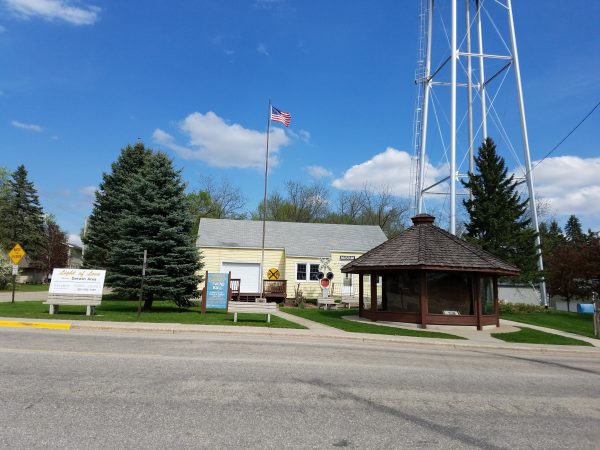
The ball is the pride of Darwin — but before Courtney Johnson moved here, she had never even heard of it. “When I first came to the area I didn’t know anything about the twine ball,” says Johnson. Her husband had grown up in Darwin and is a distant nephew of Francis Johnson, the man who rolled the Darwin twine ball.
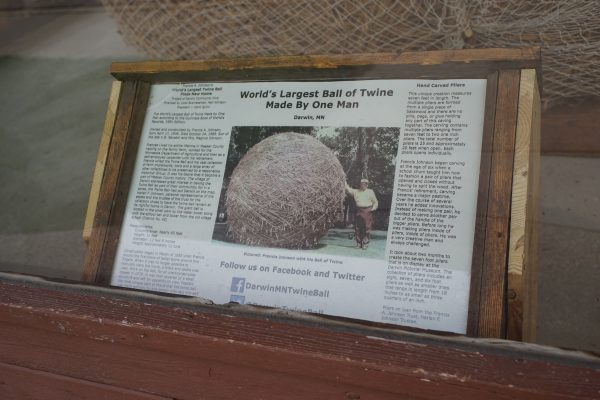
Francis Johnson was a farmer, and his farm was lousy with loose twine. One day, in 1950, while cleaning up after his nephew Harlan, Johnson started rolling some of that extra twine into a little ball. “So he, of course, picked up the twine yelling out Harlan that he’s just young and needs to start picking up after himself.[…] Before you know it, he had a six-inch twine ball, and the six-inch twine ball would get to a foot,” explains Courtney Johnson. And for reasons unknown even to himself, Johnson rolled that twine ball for the next 29 years. The twine ball was easy enough to roll in its early stages. Johnson would work on it in the basement But as it got bigger he had to move the ball outside or it would get stuck down there for good.
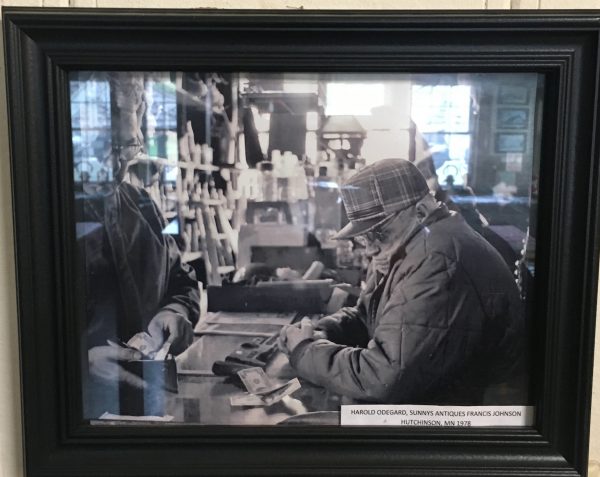
Eventually, the ball got so big that he couldn’t roll it around his yard anymore with his body weight. Johnson invented an ingenious method to rotate the ball using railroad jacks. He would tuck a jack under the ball and use it to nudge the ball forward. He would have something on the other side to stop it from rolling too far, and then wrap twine around the ball. He repeated this process over and over. Rolling the ball, adding twine. Rolling the ball, adding more twine.
The ball attracted a lot of attention both in and out of Darwin. At one point in the late 1950s, Johnson and the twine ball — now five feet tall — were even flown to New York to appear on television. By 1958, Francis’s twine ball was absolutely massive. It had to be the largest ball of twine in the world, so that’s what he called it… until someone did.
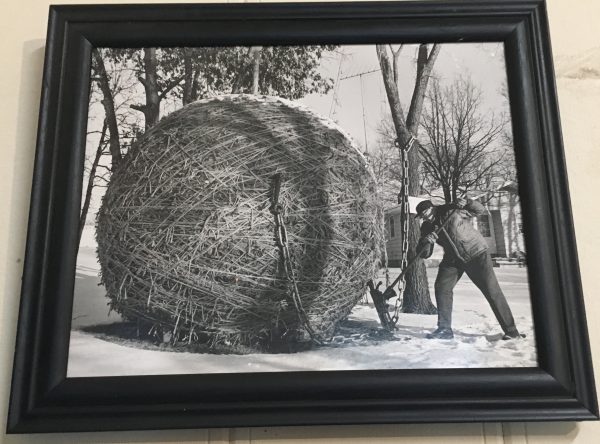
Frank Stoeber
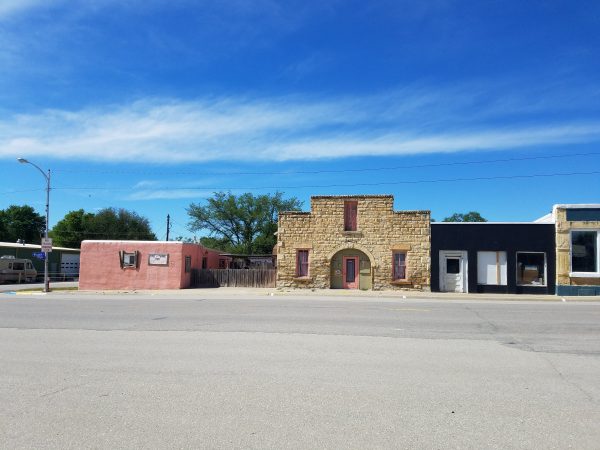
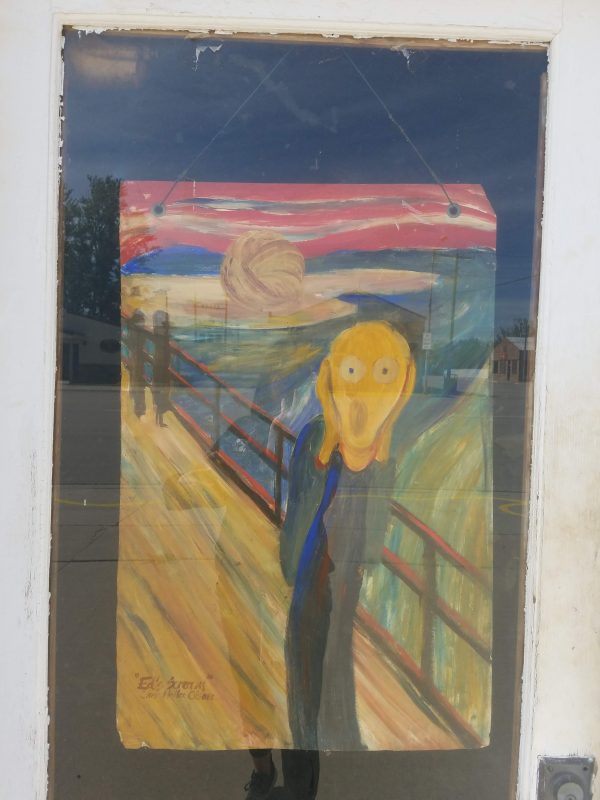
Cawker City is about 500 miles south of Darwin. Cawker City’s population is a little larger than Darwin’s, but walking around you wouldn’t guess that. It almost feels like an empty set of a western movie. In some of the windows of the abandoned storefronts, there’s twine-ball inspired artwork — the ‘Mona Lisa’ holding a twine ball, and one of Georgia O’Keeffe’s flowers with a twine ball at the center.
The Cawker City twine ball is looked after by a woman named Linda Clover. Unlike its counterpart in Darwin, which is trapped behind glass, this twine ball you can walk right up to and touch. “We want people to be able to smell it,” explains Clover, “because twine has its own fragrance.”
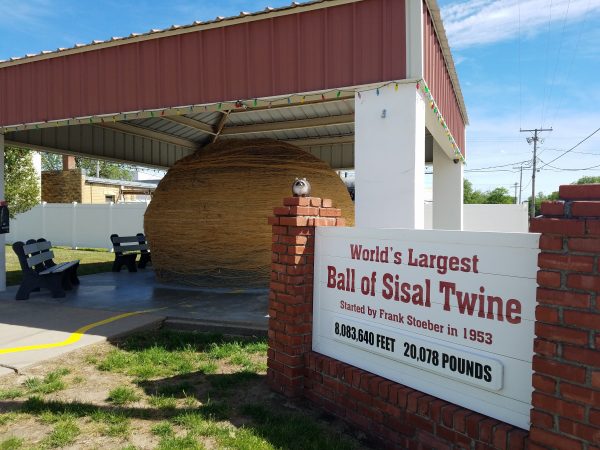
Linda Clover may be the caretaker for the Cawker City twine ball, but it was rolled by a man named Frank Stoeber in 1953. Stoeber was a farmer, just like Francis Johson, and he got started rolling his ball of twine in basically the exact same way that Johnson did. “He started it because he was cleaning up his barn. And the man just was picking up the twine because it was on his barn floor thinking he would roll it into a ball [and] put it into a tub to get it out of the way,” says Clover. Stoeber and Johnson were both raised with a depression-era reluctance to waste anything at all. Anything that could be useful in the future was saved.
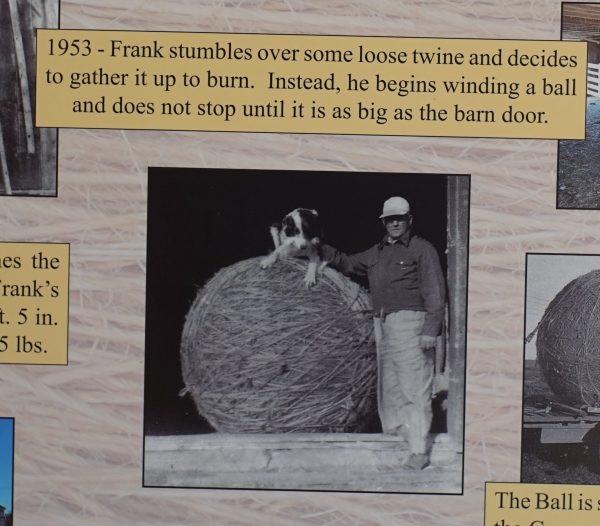
Stoeber may not have been the first person to try to roll the world’s biggest twine ball, but he certainly had a talent for it. By 1956, just 3 years in, Steober’s ball was already 7 1/2 feet tall and weighed over 4,000 pounds—nearly the size of the Darwin twine ball. Doug Kirby is the co-founder of Roadside America, and he says that the two twine balls have become much more than a silly competition. “I think it starts with people making fun of them because it’s such a ludicrous thing,” says Kirby, “but then you quickly realize there’s something about them that somebody took what should have been insignificant little pieces of twine or string or garbage and they’d made something that’s essentially made them immortal.”
Kirby’s been tracking the status of the balls for a long time, and he says that for a stretch of time, it looked like Stoeber’s ball in Cawker City might have taken the lead. By 1961, Stoeber’s ball was already eleven feet tall. Stoeber’s ball in Cawker City had become a popular attraction in the Kansas area — he would take it to local fairs and people would try to guess the weight. It was such a hit that town officials asked Stoeber if he could bring the twine ball into town to put on permanent display. Officials from the Guinness Book of World Records came to Cawker City, Kansas in 1973 and declared Stoeber’s ball the official World’s Largest Ball of Twine at eleven feet in diameter. Unfortunately, his glory was short-lived because he died the following year in 1974.
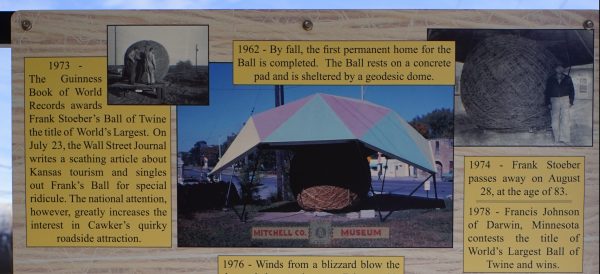
Meanwhile, up in Darwin, Minnesota, Francis Johnson was still alive and kicking and rolling twine. He kept going until he surpassed Stoeber’s ball and dethroned Cawker City for the Guinness World Record just a few years later. And, without anyone left to challenge his place in history, Johnson retired from twine ball rolling. He died ten years later, from emphysema at the age of 85. Courtney Johnson says that it’s widely believed that the twine ball was actually the cause of his death. “A lot of people say it was a lung disease that did kill him,” says Johnson, “[If] you look at family history, there is no history of it. A lot of people say it was inhaling twine and chemicals throughout those years it probably was the reason for his death.”
The Community Vs. The Great Man Theory
The story could have ended there with two dead twine men, the largest ball of twine in the world, and the second-largest ball of twine in the world… but Cawker City wasn’t finished yet. Stoeber had left the twine ball to the city after he died, and for a few years, it just sat there in the downtown gazebo — a tribute to the second greatest twine ball roller in history. But then the town decided they didn’t want to settle for second best. “We decided let’s have some fun and we started having what we call our annual Twine-a-Thon,” says Cawker City’s Linda Clover.

Residents of Cawker City decided to jump in and start adding more twine to Stoeber’s ball to see if they could beat the record again. This time it wouldn’t be the product of one man, but an entire community. Cawker City started holding twine-a-thons once a year where everyone in town would gather to help grow the town twine ball. And eventually, they started allowing visitors to wrap twine on the ball on a daily basis. Getting to wrap the twine ball became the reason to visit Cawker City.
The latest estimate has it at 20,500 pounds, over 2,500 pounds heavier than Johnson’s. And when you see it in person, it is unquestionably larger in circumference. But not everyone agrees that rolling twine balls should be a group project, especially in Darwin. Courtney says that Johnson’s ball is particularly impressive, not just because of its perfectly round shape, but because it was the sole accomplishment of one man. Also, Francis Johnson had his own special technique for rolling a perfectly symmetrical sphere. The people of Cawker City don’t have that. They have no way to wrap the top and bottom of the ball, and so it keeps getting wider and wider. In fact, it’s not even really a ball anymore, more of an oval with a flat bottom. So, Cawker City’s ball might be bigger, but the Darwin ball is definitely retained its spherical form over the years.
“It’s an accomplishment like climbing Everest,” says Edward Meyer, of the Darwin twine ball. Meyer is the former Vice President of Exhibits and Archives with Ripley’s Believe it or Not, and author of the book Buying the Bizarre: Confessions of a Compulsive Collector. It was literally Meyer’s job to find the weirdest things in the world and put them on display, and back in the early 90s, he had his eye on Darwin’s giant twine ball.
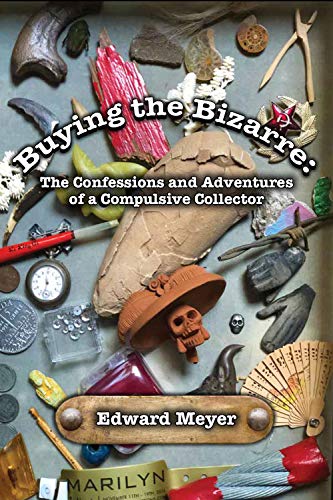
As luck would have it, Johnson’s nephew had inherited his entire estate — including the twine ball. Johnson’s nephew asked if Meyer wanted to come to Darwin and possibly purchase the ball for Ripley’s. Meyer was asked to pitch the town on the idea of putting Johnson’s twine ball in a Ripley’s museum in Orlando. Meyer had thought there was no better way to honor Johnson’s accomplishment than to put it on display where possibly thousands of people a week would see it, but that’s not how it turned out.
“I gave a presentation and told them that I wanted to buy it. And the reaction was you know over our dead body. It was probably one of the most uncomfortable evenings of my entire life… I was not sure how this was going to end,” recounts Meyer. The people of Darwin thought the twine ball could bring in tourism to the area, but more importantly, the ball had become a part of Darwin’s identity.
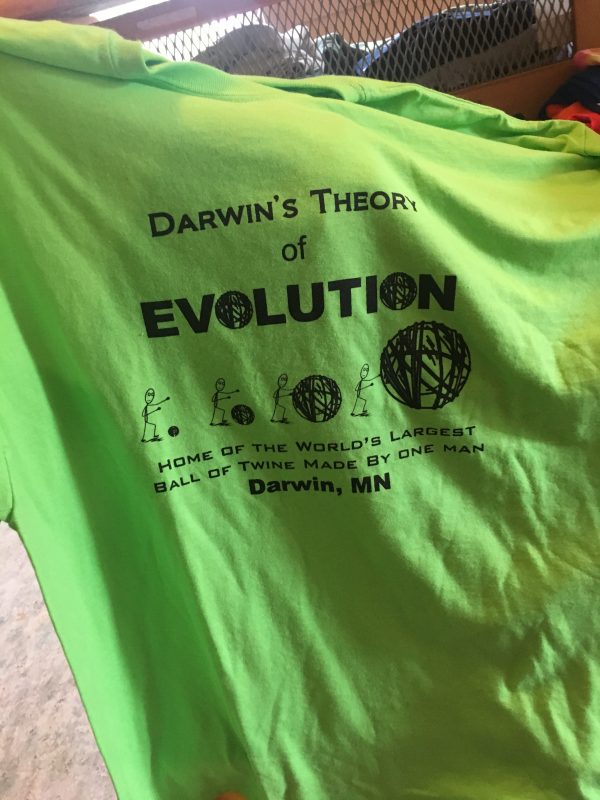
Josh Johnson is the major of Darwin, and he explains that the ball is more than just a large ball of twine. “[The] twine ball is a good analogy — we say ‘it’s the twine that binds.’ It represents not only how we support that, but our support of each other.” The town had adopted the ball as their own, and even started an annual tradition called Darwin Twine Ball Day, which includes a number of twine ball-related activities. They pass out candy to kids, roll miniature versions of the twine ball down the street and have a parade, and people come from all over to celebrate with them.
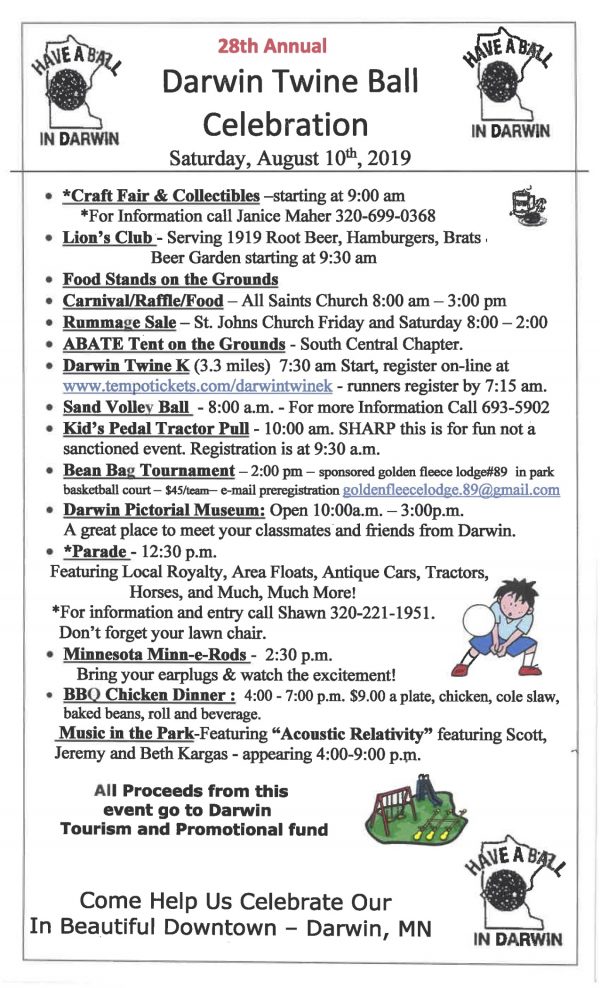
Francis Johnson’s ball had become central to life in Darwin, and Darwin made it clear that if Meyer wanted a giant twine ball for Ripley’s, he would have to get it from some other town… which is exactly what Edward Meyer did.
A New Challenger
As it turned out, while Darwin and Cawker City were battling it out in their public twine ball arms race, a third ball was rapidly growing, in Texas at the hands of a man named J.C. Payne. Payne was a retired brick mason who was the type of guy who was always in search of a new project. And, in the late 1980s, he found one. Payne had read about the battle of the balls in Darwin and Cawker City and had a clear favorite in the race.
“From the beginning, J.C. Payne did not want cawker city to beat Francis Johnson,” explains Meyer. Apparently, Payne was not a fan of the fact that the Cawker City community effort was about to beat Johnson’s solo project. “He thought you know that it was a shame that Cawker City was going to soon be bigger than Darwin’s because the whole town was involved in it. He thought that this was […] cheating, […] and said you know if Francis isn’t going to be the world’s biggest then I’m going to be the world’s biggest.”

Payne didn’t start rolling his ball until 1987 – a full 37 years after Johnson, but by 1992, the Guinness Book of World Records declared it the largest ball in the world. In a few short years, Payne managed to create a ball that was 42 feet in circumference, 13 feet tall and weighed six tons. The main gripe about J.C. Payne’s ball was that he used artificial, colored nylon twine, while Johnson and Stoeber both used sisal twine. Sisal is an earthy-colored, plant-based material and has that has a classic farm feel to it, whereas nylon feels more manufactured and inauthentic. Nylon also weighs less making Payne’s ball much lighter than both Cawker City and Darwin’s.

Meyer ended up flying to Texas to meet Payne in person and see the ball for himself. At first, it looked pretty good but was beaten up during its transport to the new Ripley’s location opening up in Branson, MO. Still, this misshapen monster of a ball was going to be the pièce de resistance of the new Ripley’s museum. The ball was so large that the building had to be constructed around it. If for any reason they ever need to move it out of there, they’ll either need to take the roof off or blast a hole in the wall. On top of that, the placard in front of Payne’s twine ball at the Branson Ripley’s Believe it or Not indicates that it’s the “World’s Largest String Ball,” with no mention of the word “twine.”

The World Famous Twine Man
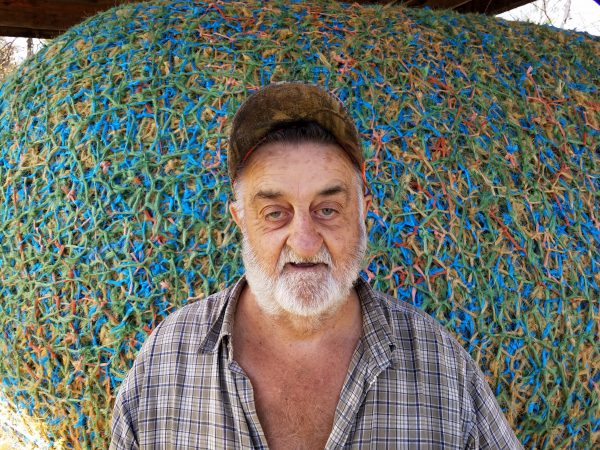
Deep in the Northwoods of Wisconsin is a man named James Frank Kotera — or “JFK” as he prefers to be called. Kotera has been quietly working on his own version of the world’s largest ball of twine. There are hand-made signs posted all of his property with the story of his ball. As he tells it, one night in 1975, God came to him and told him that he was to stop drinking, turn his life around, and become a world-famous twine man. And that’s more or less what he did.
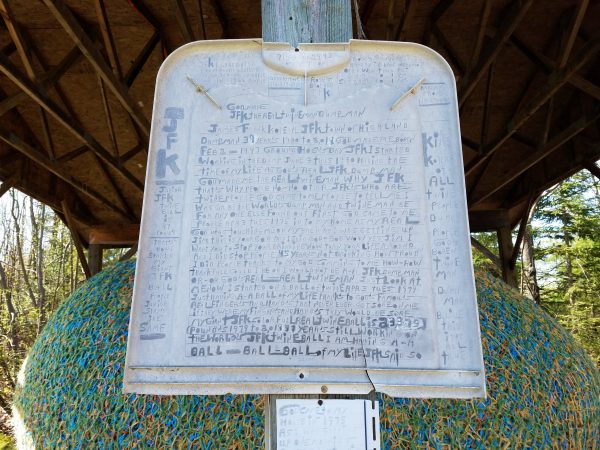
Kotera’s ball is a little different from the rest. He takes small segments of colorful twine and weaves and tucks the individual pieces into the ball so the surface resembles a net. It’s also harder for him to reach the top too, so it’s a lot wider than it is tall. JFK also claims that his ball is the largest by using a different metric — weight — at 23,375 pounds. Based on his calculations, it’s nearly 3,000 pounds heavier than Cawker City’s. He says he knows this because before adding twine to the ball he puts it in a garbage bag, weighs it, then adds the total to his overall measurements. If he’s correct, his is definitely the heaviest of all four twine balls.
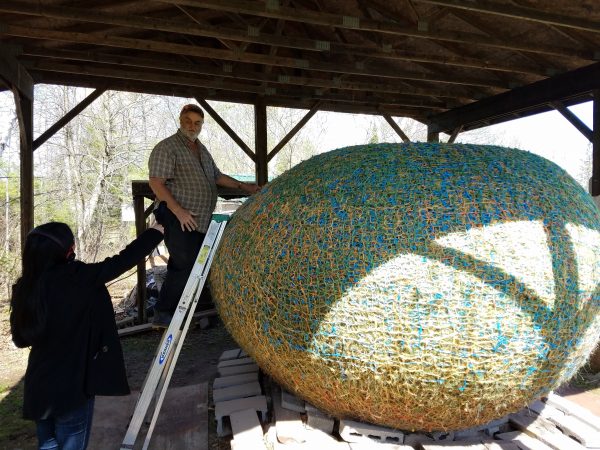
But JFK isn’t interested in having the ball measured by the Guinness Book of World Records, because no matter what anyone else says — his ball is the largest according to his own standards. He doesn’t need some outsider to come and tell him what he already believes. So, for now, a careful balance is intact. The four largest twine balls exist peacefully alongside one another—each content with its own version of superiority.

Learn more about The World’s Largest Collection of the Smallest Versions of the World’s Largest Things from the coda here.
*This episode originally reported that Darwin is about an hour east of St. Paul, MN — it’s actually about an hour west.





Comments (16)
Share
Great episode! It’s one of the best explanation of America dumbness.
Not exactly a pilgrimage, but we always seem to pass through Cawker City once or twice a year while storm-chasing. We always stop. We’ve met Linda Clover, who is happy to see extra tall people stop by, asking us to wrap the upper part of the ball. Last year, some British octogenarians on holiday were there as we pulled in. THEY had made it a pilgrimage.
Hi Roman. Love this podcast if you have the budget send one of your staff to the east coast of Australia. We have a total thing with large iconic structures ( e.g. crayfish, bananas etc) that also serve as viewing platforms of the surrounding landscape. I think the reason d’être for these structures is different to the USA as they are landmarks in places which have no distinguishing features, rather than a demonstration of personal endeavour
The second segment of the episode after talking about TWLCotSVotWLT. You got on the topic of what will be the next version of the roadside attractions as modes of travle change. Airport art being the most concidered, bit side walk art already exists and is more akin the the folk nature of roadside attractions. Graffiti street art has a long colorful and regional history. It is a history that hits the 99pi topic: design, respones to the built environment, class and access, and a transformative arch from art of vandalism to auction house show stopper.
$0.02 (usd)
I loved this episode. It reminded me of so many childhood road trips between NH and MI. If a roadside oddity was free, we’d stop. Never could convince my mom to stop at one of the Mystery Spots in MI.
In Lincoln MA there’s a field where a family placed a couple old rocking horses, the kind with springs that were popular in 1970s. People would stop to take photos on their way to the neighboring Audubon refuge. Fast forward a couple years and there is now a circle of horses, maybe 20. I thought of it when the artist at the end of the episode talked about smaller examples of public creativity growing in popularity today. Little Free Libraries and the towns that paint murals on their transformers/electrical boxes are other examples.
Kansas native here! I’ve been quite a few times to Cawker City. When you were talking about Lucas Kansas at the end I hoped you’d stopped at The Garden of Eden which is incredible for many reasons… but if only to show you what concrete can do ;) Lucas Ks also has the “second best public restroom” which is an incredibly intricate art piece with mostly toys…. and also it’s an incredibly clean bathroom.
Also to pitch rural… rural to most people… part of Kansas is the Cosmosphere in Hutchison…. It’s actually the worlds largest collection of Russian and American space artifacts together, the second largest collection of American space artifacts (second only to the National Air and Space Museum in DC) and the largest collection of Soviet space artifacts outside of the former USSR.
Just incase you think we’re all tornados and wheat ;)
Roadside attractions are great… I’m very into the huge statues made in the 60’s all by the same company (that’s why they all look alike) nicknamed “Muffler Man”. They are just a long gone type of Americana that is kinda coming back, there’s no car lot without a an Inflatable man (99PI episode 143) or an inflatable ape or cartoon trying to sell mattresses. I love to hear a 99IP about those giants and how they made them and how they came to be a huge eye catch device and now they are a huge pilgrimage point to the Roadside junkie like me…
Yes, Australia has more than it’s share of giant roadside attractions too, mostly built 40-50 years ago. But your guest at the end of this episode hit the zeitgeist with the thought that now even big urban environments need to attract foot traffic to areas they otherwise wouldn’t otherwise stop. Australian cities, especially Melbourne and Adelaide, have started reinvigorating the small lanes and alleys within the business district to create community and commerce where once there was simply fire doors and dumpster parking.
Human’s are drawn to novelty like moths to a flame. So the cities publish tour guidebooks to help tourists find the best graffiti and street mural lanes or the best micro-bars, galleries or cafes (with unmarked doorways and standing room for maybe 7-8 people).
I LOVE THIS STORY SO MUCH.
Even average sized towns want to have an identity. Check out Elko, Nevada for their fiberglass cowboy boots all around town. These boots are about 5 feet tall, and scaled up from there…. about the size of a small adult. I believe it was a Chamber of Commerce thing. If your business wanted a boot you paid a smallish sum of money, then got someone to paint it in a way representative of your business. Even public buildings got in on the action. There’s a boot at the Library and a boot at the County Courthouse. There’s some pretty fine art on most of them.
I thought you should have a link to the World’s Largest Collection of the World’s Smallest Versions of the World’s Largest Things, so here is one: http://kansastravel.org/worldslargestcollection.htm
Also, the novel Another Roadside Attraction goes with this story, especially with your discussion of why there are (were) roadside attractions. This novel was important to my high school years, though I think it is not as well known now. https://www.amazon.com/Another-Roadside-Attraction-Tom-Robbins-ebook/dp/B000FBFNWE/ref=sr_1_1?crid=27QUPBJODNE4A&keywords=another+roadside+attraction+tom+robbins&qid=1565527932&s=gateway&sprefix=robbins+another+%2Caps%2C257&sr=8-1
The anonymous Minnesota street artist who invented a better mouse door | Star Tribune
http://m.startribune.com/the-anonymous-minnesota-street-artist-who-invented-a-better-mouse-door/513510702/
Great Episode! The best part is during largest collection of small versions of largest….how Roman cant hold back his giggling ! 😂
Having a thought for 99pi and this episode every time I’m in SFO and see the exhibits. My flight was extremely delayed and I actually went and checked it out purposefully today. Lovely exhibit on 50s Modern lifestyle… lots of good design there ;)
Where I can I find the music for this particular episode?
Hi Jay, these are original pieces by our composer, Sean Real.